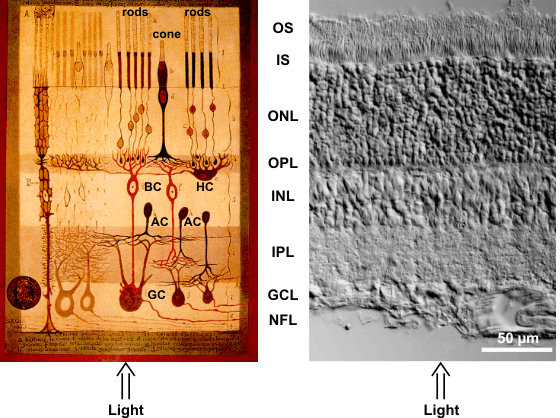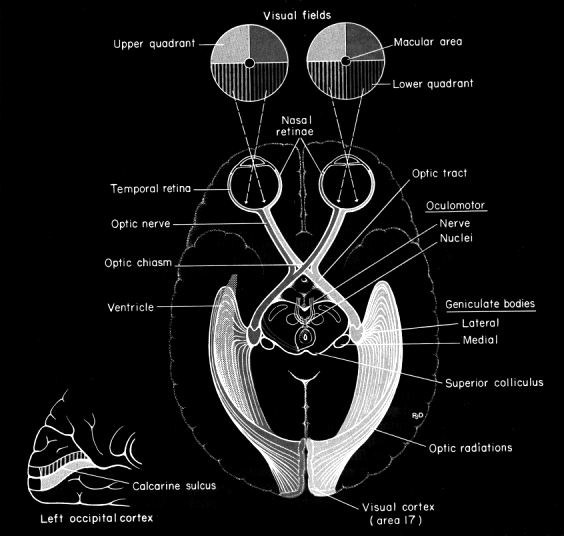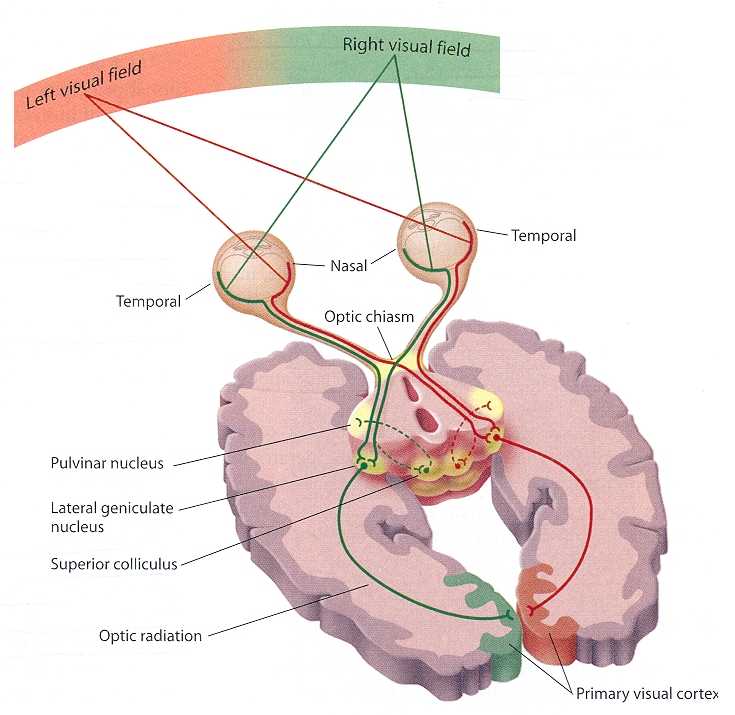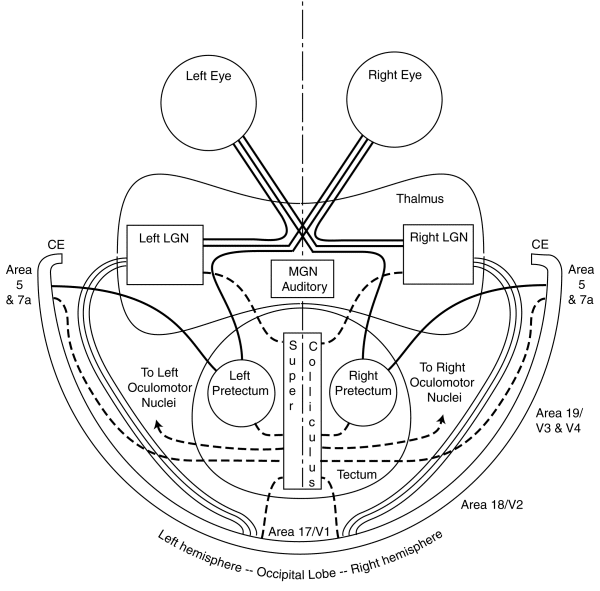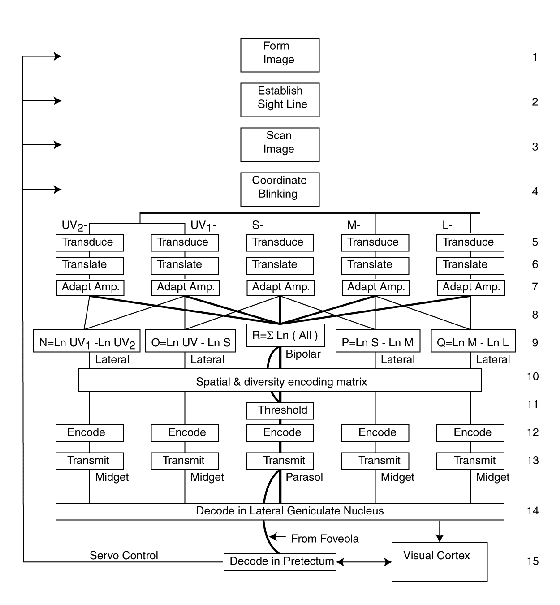Computing
& the Arts
Professor
Frederic F. Leymarie
2004-2007
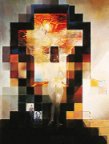 Lincoln in Dalivision
(1974-76), Salvador
Dali (1904-1989)
Lincoln in Dalivision
(1974-76), Salvador
Dali (1904-1989)
Salvador Dali's wife Gala is contemplating the Mediterranean;
seen from far away the canevas is the portrait of Abraham Lincoln.
1.
Computational theories of
Visual Perception
"Classical" theories of visual perception in computing:
It is assumed that an understanding
of the world that surrounds us can be abstracted from sensing data, and
in particular from retinal images.
Motivation comes from the known physiology of the visual system of
primates, from the retina and its optics (the "camera"), through visual
pathways (early "filtering" and communication), to the first layers in
the visual cortex (early "feature" reconstruction).
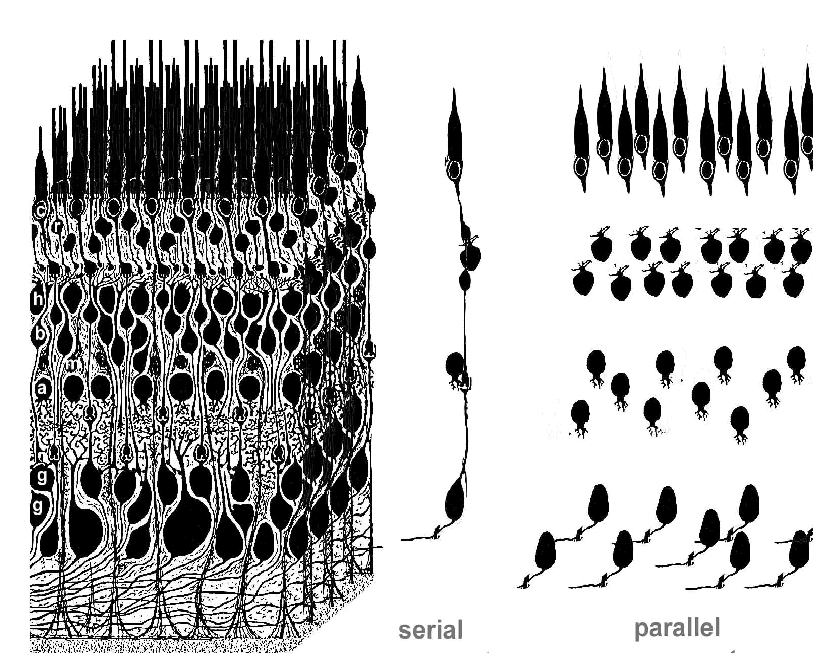
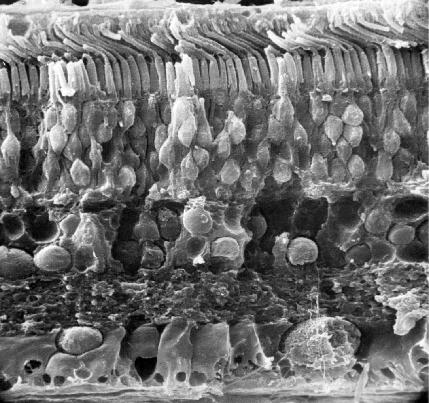
A cross section of the retina (of a rabbit), after Kessel & Kardon,
1979.
Light arrives from the bottom, traverses the entire retina, to reach the
photoreceptors (cones and rods) at the top. A photochemical reaction
creates electrical potential variations in the membrane which percolate
back to the ganglion cells (at the bottom) giving rise to all-or-none
action potentials.
More than 1 million ganglion cell axons make up the optic nerve, along
which
the spikes travel toward the LGN and visual cortex for processing.
Adapted from Figure 3.1, "The Early Visual System," Christof Koch, 2003.
ABSTRACTION of the complexity
of the world is the GOAL here ("reductivism").
It is also a systemic paradigm:
what is the process and its structure (dynamics) which permits to
process visual data (photons collected onto the retina) and produce
object and scene understanding.
The Sensori-neural
Basis of the Color Experience.
David
Marr's model 
A "bottom-up" approach, which seeks
to build abstractions of objects, scenery, the world.
Major challenges to this
"classical" approach:
There is no room for a high
resolution fully spatial
rendition of the actual object being viewed.
Visual "illusions" are not understood by this paradigm
"How to outsmart the system:" http://www.cs.unm.edu/~leigh/pix/
Gestalt Principles 
Our brain perceives wholes
out of incomplete elements placed in contexts.
Shape and parts 
"Human vision organizes object
shapes in terms of parts
and their spatial relationships."
Visual Illusions (more on..)
- Motion Induced Blindness
: make people disappear ...
References/Links
[BI150]
Course
in Neurobiology, CalTech:
[Eye:Physio:2004+]
[Koch:EarlyVisualSysCh3:2003]
Koch,
C., "Early Visual System," Ch. 3 ("The First Steps in Seeing"), pp.
51-67, Aug. 2003.
Local copy

[UniOfCalgary]
The Bases of Colour Vision, Vision and
Aging Lab, Psychology, University of Calgary.

BACK to OUTLINE
Last update: Oct. 9, 2007




